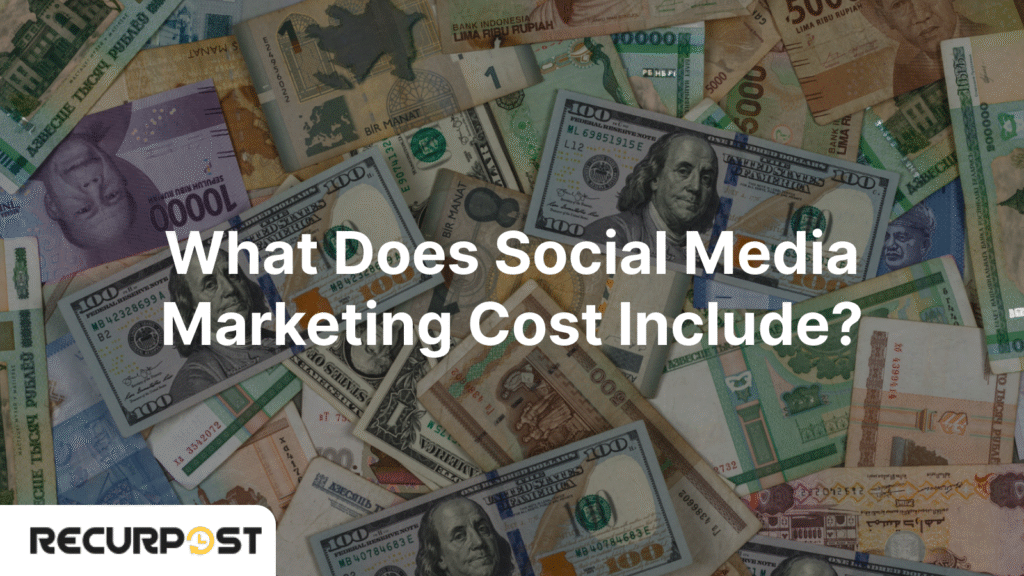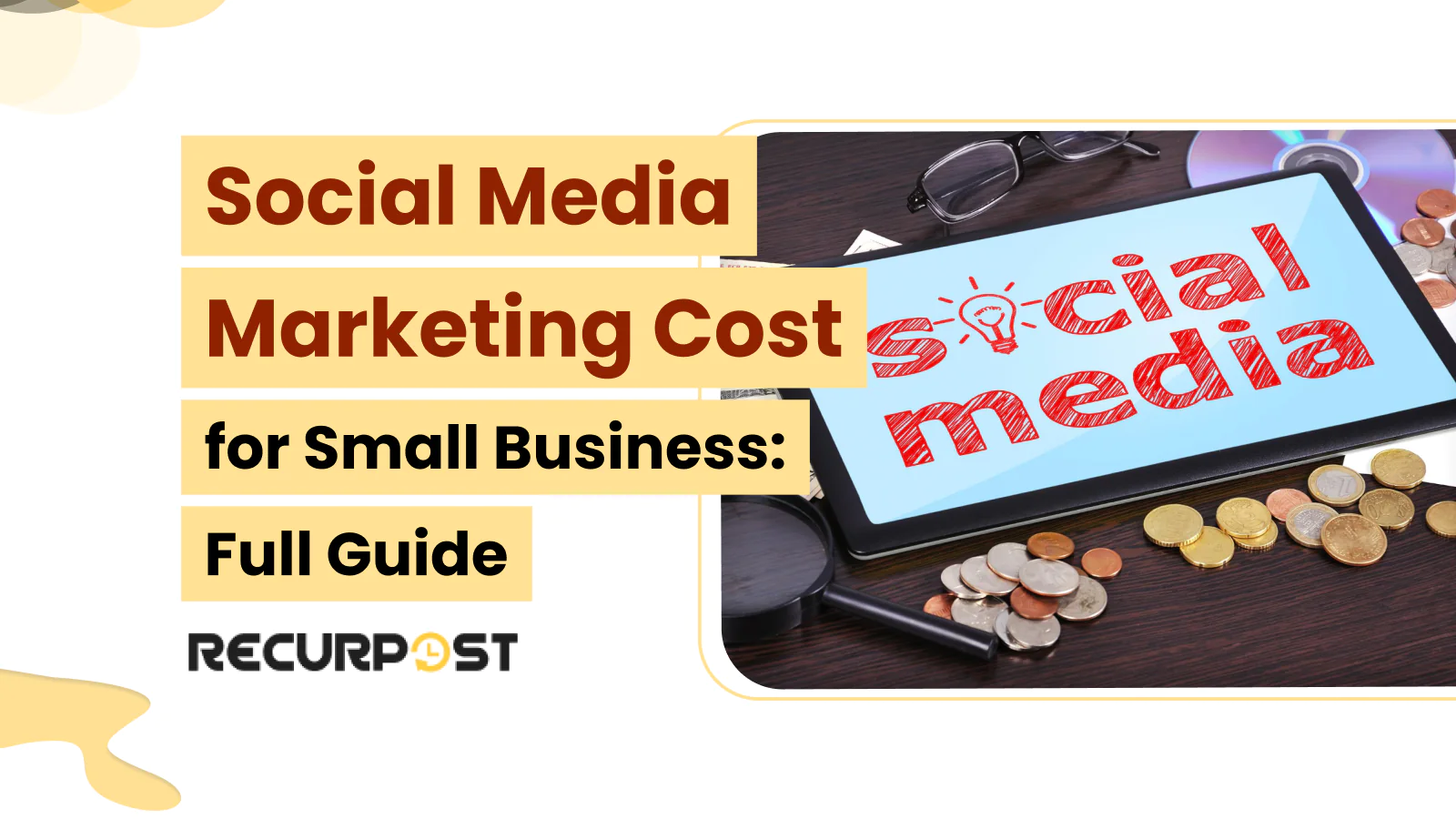In 2025, small businesses typically invest between $500 and $5,000 per month on social media marketing, though some budgets stretch to $10,000 or more, depending on needs and goals. Every decision, from running ads to choosing the right platforms, directly shapes your monthly spend and business growth.
Today’s business owners face one key question: What should your social media marketing budget be? Whether you’re a startup, an established small business, or working with an agency, understanding these costs unlocks new possibilities for growth, reach, and online visibility.
Most full-service social media marketing packages range from $1,000 to $5,000 per month. As 2025 advertising rates evolve, expect changes in content creation, ad spend, and community management pricing. Every dollar of your budget should drive results, targeted ads, better brand recognition, and more website traffic.
This guide breaks down more than just ad prices. You’ll see how to plan for both quick wins and long-term brand growth. From content and community management to software tools, discover how smart budgeting for social media marketing can future-proof your business.
Get ready for clear, up-to-date answers that help you invest wisely and align your campaigns with your biggest business goals.
What Does Social Media Marketing Cost Include?

It’s important to break down social media marketing costs into its key components for small businesses. Social media management pricing for small businesses includes hourly rates between $20 and $100, and monthly retainers from $500 to $10,000 or more, depending on the package and services.
Most social media marketing packages from an agency or freelance social media manager cover post design, copywriting, scheduling, influencer partnerships, customer engagement, and monthly ad spend.
- Basic social media marketing packages start at $500 to $1,500 per month, while comprehensive packages range from $3,000 to $10,000+, depending on how many platforms and what services are included. Small business social media management costs are based on business size, content volume, and number of platforms.
- Advertising costs on social media depend on campaign type: $5 to $25 per click, $25 to $200 per lead. Your social media advertising cost in 2025 depends on ad budget, chosen platforms, campaign length, ad format, bidding strategy, and target audience. Social media marketing cost per month also varies by business goals and budget.
- Social media agency pricing in 2025 ranges from $2,000 to $10,000+ per month for full management. Social media marketing costs for small businesses, whether in-house or through an agency, include both fixed and variable expenses: management fees, content creation, ad spend, and software costs.
Social media marketing cost for small businesses also covers time spent on management, content creation, advertising, and analytics, ensuring small business owners get the best value from every dollar spent on social media marketing. Social media remains essential for business success.
Is Social Media Marketing Worth the Cost?
- While likes are free, meaningful results require investment.
- Every dollar spent on social media ads must generate measurable returns.
- When ad budgets fail to drive clicks, save time, or generate leads, they waste resources.
- Effective spending converts content into sales.
- Ineffective spending creates noise.
- Strategic posting and clear spending goals deliver ROI.
What Impacts Your Social Media Marketing Cost?
Social media marketing cost depends on your business size, selected platforms, and audience targeting. Each post, ad, and marketing tool affects your total spend. Small businesses see monthly costs shift based on campaign type, management setup, and content creation needs.
Here’s what impacts social media marketing cost for small businesses across different platforms:
- Platform selection: LinkedIn and YouTube usually have higher social media advertising costs than Facebook or Twitter. Your industry, niche, and target market change your average monthly ad spend and overall budget.
- Ad format: Video ads, carousel posts, stories, and influencer marketing all increase social media marketing costs. Multi-format campaigns often require higher content creation budgets.
- Audience targeting: Reaching a broad or competitive audience drives up your ad spend and cost per click (CPC). Custom audiences and advanced targeting features affect your overall social media marketing cost.
- Bidding strategy: Manual bids, automated bidding, and cost caps determine how much you pay for each result. Audience size and bidding method can change the total cost for social media marketing campaigns.
- Content creation: High-quality visuals, branded videos, and creator partnerships add to content creation cost and monthly package pricing. Small businesses often budget extra for creative assets and campaign design.
- Social media management setup: Choosing between a social media marketing agency, a freelance manager, or management software changes your pricing model. In-house teams and outsourcing have different fixed and variable costs.
- Number of platforms managed: Managing accounts on multiple social media platforms raises both time investment and overall management costs. Multi-platform campaigns often need a bigger monthly marketing budget.
- Community management: Engaging with comments, DMs, and reviews increases labor costs. Some affordable social media management services include community management and reporting in their package pricing.
- Campaign duration and volume: Long-term campaigns or frequent social media posts drive up monthly ad spend and maintenance costs. Tracking campaign performance, analytics, and reporting can add to your recurring expenses.
Platform-by-Platform Cost Breakdown

Social media marketing costs change based on which platforms you use, your target audience, and ad strategy. Each social media platform offers unique formats, pricing models, and ad placements, so your ad budget needs to match where and how you plan to show up.
In 2025, businesses spent over $107 billion on digital channels, with social media advertising costs climbing fastest across Facebook, Instagram, and YouTube.
Here’s how costs break down by major social media platform:
Best For: Small businesses, real estate, restaurants, and e-commerce brands
- Average CPC: $0.94
- Average CPM: $12
- Key Uses: Local campaigns, product ads, retargeting
- Advertising cost drivers: Ad relevance, bidding style, content quality, audience size
Facebook advertising prices start at $0.94 per click and $12 per thousand impressions. Agency packages often bundle Facebook marketing features like lead generation and community management with monthly management costs.
Best For: Fashion, beauty, wellness, lifestyle products, creators
- Average CPC: $0.60–$1.20
- Average Reels CPM: $6–$15
- Key Uses: Visual branding, product launches, short-form video
- Influencer fees: $100–$10,000+ per post
Instagram’s ad budget goes to creative placements, Stories, Reels, and influencer marketing—driving website traffic and sales. Management packages often include content creation and influencer partnerships as recurring monthly costs.
Best For: SaaS, recruitment, financial services, enterprise B2B
- Average CPC: $6–$9
- Sponsored InMail: $0.80–$1.20 per send
- Key Uses: Outreach, hiring, high-ticket B2B
- Best Use: B2B outreach, hiring campaigns, event promotions
- Why It Matters: It’s expensive compared to other social media channels, but it delivers high-intent clicks, great for social media marketing services targeting professionals or high-ticket offerings.
LinkedIn advertising costs more than other platforms, but it’s effective for targeting professionals. Agency pricing for LinkedIn usually covers higher ad spend and campaign management fees.
TikTok
Best For: Gen Z audiences, entertainment, DIY, food, and ecommerce
- Average CPM: $10–$30
- Creator partnerships: $250–$20,000 per video
- Key Uses: Story-driven content, trending campaigns
TikTok marketing cost depends on creative video quality, trend usage, and influencer tie-ins. Multi-platform strategies often blend TikTok, Instagram, and YouTube for greater reach.
YouTube
Best For: Education, tech, SaaS, automotive, B2B, lifestyle tutorials
- Cost per view: $0.10–$0.30
- Bumper ad CPM: $5–$15
- Key Uses: Long-form videos, product demos, expertise
YouTube marketing supports both brand awareness and evergreen content creation. Businesses with bigger monthly marketing budgets use YouTube for thought leadership and detailed product videos.
Twitter/X
Best For: Tech, crypto, politics, startups, personal brands
- Average CPC: $0.38–$1.35
- Key Uses: News-based content, event marketing
X/Twitter’s ad performance relies on real-time engagement. Twitter management costs are lower than LinkedIn but higher than Pinterest. Brands often combine Twitter campaigns with other social channels to maximize ad spend efficiency.
Threads (by Meta)
Best For: Creators, startups, lifestyle brands, and brands testing tone
- Native Ads: Not available yet
- Creator fees: $100–$1,000 per post
- Key Uses: Organic engagement, branded conversations
Thread costs are currently tied to organic creator partnerships and management fees. No native ad system yet, so packages focus on community management and brand messaging.
Bluesky
Best For: Indie tech, crypto, open-source, web3 communities
- Ad System: None
- Influencer rates: $50–$500+ per collab
- Key Uses: Niche content, early adopters
Bluesky is an organic-first platform. Marketing cost centers around strategist fees, sponsored content, and content creation packages, rather than traditional advertising costs.
Google My Business / Google Business Profile
Best For: Local service providers, restaurants, salons, realtors
- Local Service Ads (LSAs): $5–$30 per click
- Boosted Posts via Smart Campaigns: $50–$300/month
- Best Use: Local visibility, store visits, service-based marketing
- Why It Matters: Though not a classic social network, it supports your overall social media presence, especially for brick-and-mortar businesses and service-based brands managing multiple platforms.
Google Business Profile typically integrates into management packages supporting local SEO and discovery.
Best For: Home decor, fashion, food, beauty, lifestyle, and DIY brands
- Average CPC: $0.10–$1.50
- Average CPM: $2–$5
- Best Use: Product discovery, seasonal campaigns, visual search
- Why It Matters: Pinterest isn’t just for inspiration; it drives real purchase intent. Pins can stay visible and searchable for months, making it a low-cost channel for evergreen social media marketing efforts.
Pinterest excels in targeted advertising and product marketing, generating consistent website traffic and leads. The platform integrates into e-commerce marketing packages and maintains visual content visibility without frequent reposting.
Sample Budgets Based on Business Size

Social media marketing costs change with business size, team setup, and digital marketing goals. Whether you’re managing campaigns in-house or partnering with a social media marketing agency, your budget controls how far your brand reaches, what content you produce, and how much you spend on ads each month. Your social media marketing cost should reflect your industry, goals, and the platforms you use.
Did you know?
Budget-friendly social media marketing services for small businesses start at just $500 monthly when using basic management packages and single-platform advertising. Small businesses, which drive nearly half of global economic value, rely on affordable social media marketing options to support growth and local stability. [Statista]
Current social media marketing investment trends by business size:
Small Business
- Monthly social media marketing cost: $500–$1,000
- Estimated monthly ad spend: $500–$1,000
- Focus: Facebook, Instagram, Google Business Profile
- Services included: Basic social media management, paid ads, and essential content creation
- Tools: Single-platform management software, lean packages, and streamlined reporting
Small businesses often pick starter social media marketing packages, focusing on basic advertising and cost-effective content solutions to maximize ROI.
Mid-Sized Business
- Estimated monthly spend: $2,000–$5,000
- Focus: Multiple platforms, regular paid ad campaigns, traffic growth
- Includes: Freelancers or agency management, influencer marketing, and multi-format media tools
- Budget covers: Community management, creator partnerships, content calendars, and advanced analytics
Mid-sized companies invest in robust social media marketing services to handle community engagement and consistent cross-platform advertising.
Enterprise or Large Business
- Estimated monthly spend: $10,000+
- Focus: Cross-channel campaigns, targeted ads, large-scale reach
- Includes: Advanced management packages, in-house social media teams, full-time strategists, and agency retainers
- Budget supports: Ad testing, creator partnerships, branded content production, and long-term campaign planning
Large companies allocate significant resources to premium social media marketing costs, using advanced reporting and branded content to maintain top-level results across multiple digital channels.

Typical Value Benchmarks Across All Sizes of Business
These numbers show how social media marketing costs can fluctuate based on platform choice and ad quality.
- $5–$25 per click, depending on ad format and target market
- $25–$200 per lead, based on industry and platform
- Businesses typically invest 2%–5% of their monthly revenue in social media marketing
How to Get the Most from Your Budget
Social media marketing costs should always align with your business goals. Getting strong results requires smart allocation of your advertising budget, whether you manage campaigns in-house or work with a social media agency.
Here’s how to make the most of your marketing cost across multiple platforms:
- Match platform to purpose: Choose social media channels that fit your audience’s habits. Running a paid advertising campaign on TikTok requires a different content approach than on LinkedIn or YouTube.
- Test different ad formats: Rotate between Stories, Reels, carousels, and videos. Let campaign data show you which placements make your social media marketing cost work hardest for you.
- Use scheduling tools: Automate posts with social media management software. This saves time, lowers recurring management costs, and helps keep your brand active on every platform.
- Monitor cost per result: Always track marketing cost per click (CPC), per lead, or per action. Keeping a close eye on these metrics controls your monthly ad spend and overall marketing cost.
- Repurpose content: Take your best-performing creative and rework it for use across different platforms. Smart content creation reduces costs and increases the value of every asset.
- Blend organic with paid: Support paid ads with engaging organic content and consistent community management. Organic interactions boost reach and help lower your average customer acquisition cost.
- Work with creators: If influencer marketing is part of your plan, set clear goals and pricing up front. This ensures your social media marketing cost for creator partnerships is transparent and matches your campaign objectives.
Following these steps keeps your social media marketing costs low while maximizing return across every social media platform.
Common Budgeting Mistakes to Avoid
Social media marketing cost alone never guarantees strong results; effective strategy and smart planning make the difference. Too many brands spend their full marketing budget without connecting it to clear business objectives. Whether you use social media marketing services or manage campaigns in-house, it’s easy to waste money without the right plan.
Here are the most common budgeting mistakes:
- Hiring without clarity: Working with a social media agency or marketing agency before reviewing pricing, deliverables, and fit with your goals can drain your budget. Always check social media management pricing, package features, and reporting methods first.
- Underestimating content needs: Skimping on content creation leaves campaigns without the visuals, captions, or cross-platform consistency needed for paid ads to work. Every ad format needs a unique creative, which impacts the overall marketing cost.
- Over-relying on one platform: Putting all your monthly ad spend into Facebook or Instagram ignores growth from YouTube, TikTok, Pinterest, or Google Business Profile. Successful strategies diversify paid advertising across social media platforms to control costs.
- Skipping performance checks: Failing to track cost-per-click, cost-per-thousand impressions (CPM), or conversions causes hidden overspending. It’s critical to monitor bidding strategy and adjust ad budgets based on actual campaign performance.
- Forgetting audience alignment: Running ads without updating your target audience increases social media advertising cost but rarely drives results. Keep refining your audience targeting for every platform and campaign.
- Overpaying for unused features: Paying for premium social media management software or subscribing to expensive social media marketing packages you don’t fully use increases recurring costs. Start with essential features and scale as you grow.
- Neglecting community engagement: Focusing your marketing budget only on ads and ignoring community management or page interactions reduces returns. Paid ads must be supported by ongoing engagement, content, and customer service.
Avoiding these mistakes helps keep your social media marketing costs under control while maximizing the value of every dollar you spend. Always keep social media marketing cost as a core metric in campaign planning.
Final Thoughts
According to McKinsey, 32% of consumers research products on social media, highlighting how important these platforms are at every step of the buyer journey. Managing social media marketing cost means building a budget that fits your brand’s tools, goals, and resources.
Stay intentional with every campaign, whether you run paid ads, work with a social media agency, or manage everything in-house. Align your marketing budget to clear business objectives, keep messaging consistent across platforms, and treat each social media post as a real investment in your business’s growth.
FAQs on Social Media Marketing Cost
1. How do I calculate ROI on my social media marketing spend?
To measure ROI, track the revenue or leads your social media campaigns generate. Compare that to your total ad spend, which includes content creation, tools, and management fees. ROI is calculated as (Return – Cost) ÷ Cost.
2. What’s the average hourly rate for social media managers or freelancers?
Freelance social media manager rates typically run $20–$100 per hour, or $800–$4,000 per month, depending on experience, services, and number of social media accounts managed. Full-time managers earn $35,000–$65,000 per year. Social media marketing agency retainers generally cost $2,000–$8,000 per month, often including content creation, community management, and platform-specific services.
3. Do different industries spend differently on social media advertising?
Yes. E-commerce, tech, real estate, and beauty brands usually allocate more ad spend and invest in influencer marketing, while nonprofits or education groups rely more on organic content and community engagement.
4. Is it better to hire in-house or use a social media marketing agency?
In-house social media managers cost $40,000–$60,000 per year, or $20–$100 per hour for freelancers. In-house teams provide more day-to-day control but raise management costs. Agencies charge $2,000–$10,000+ per month for full-service packages and offer broader expertise across social media platforms.
5. How much should I budget monthly for social media marketing?
Small businesses should plan $500–$1,500 per month for basic social media marketing, covering advertising spend and management fees. Mid-sized companies usually budget $2,000–$5,000 monthly, while larger businesses often invest $10,000 or more each month for comprehensive, multi-platform campaigns.

Ruchi Dhimar is a skilled content writer with 5 years of experience. She is passionate about crafting compelling narratives, specializing in writing content for different industries.





